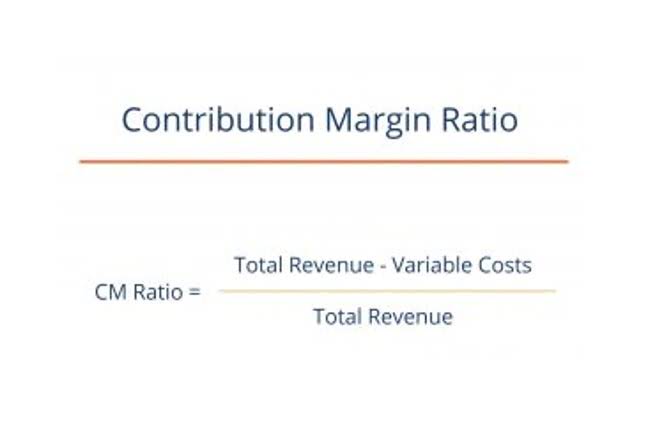
Accounts receivable, cash and cash equivalents, and marketable securities are some of the most liquid items in a company. Cash equivalents are assets that can be quickly converted into cash, such as short-term investments or accounts receivable. It does not take into account factors such as long-term debt and depreciation which can also affect a company’s liquidity position. The formula for calculating the quick ratio is equal to cash plus accounts receivable, divided by current liabilities. Otherwise referred to as the “acid test” ratio, the quick ratio’s distinction from the current ratio is that a more stringent criterion is applied for the current assets included in the calculation.
What Happens If the Quick Ratio Indicates a Firm Is Not Liquid?
- The quick ratio may also be more appropriate for industries where inventory faces obsolescence.
- Simply subtract inventory and any current prepaid assets from the current asset total for the numerator.
- The Current Ratio includes inventory and is a broader measure of liquidity.
- Similar to the current ratio, which compares current assets to current liabilities, the quick ratio is also categorized as a liquidity ratio.
- Upon dividing the sum of the cash and cash equivalents, marketable securities, and accounts receivable balance by the total current liabilities balance, we arrive at the quick ratio for each period.
- This means that the company owes more money in short-term liabilities than it has in cash, potentially indicating that the company cannot pay all of its bills in the coming months.
Potential investors can also benefit from examining industry benchmarks for the quick ratio. Some sectors, for example biotechnology and medical instruments & supplies, have particularly high quick ratios. As of April 2024, the former industry had an average quick ratio of over 4.5, while the latter had a quick ratio of 2.78. Discount stores provided a contrast, as they had an average quick ratio of 0.3. Further, it is important to note that quick ratios can vary between industries, so this ratio is more valuable when used to compare companies within the same industry. Investors who are evaluating liquidity analysis using the quick ratio should keep a few things in mind.
Quick ratio can help your company
The ratio looks at more types of assets than the quick ratio and can include inventory and prepaid expenses. Quick assets for this purpose include cash, marketable securities, and good debtors only. In other words, prepaid expenses and inventories are not included in quick assets because there may be doubts about the quick liquidity of inventory. It’s easy to calculate the quick ratio formula and run financial reports with QuickBooks accounting software. Its cloud-based system tracks all your financial information and gives you fast access to your current assets and liabilities. You can spend less time running the numbers and more time driving success.
Quick Ratio vs Current Ratio
- Like your assets, you’ll only want to include your current liabilities when calculating the quick ratio.
- However, the current ratio includes inventory and prepaid expenses in assets because assets are defined as anything that could be liquified within a year for the current ratio.
- For example, a company can have a huge amount of accounts receivable that will eventually cause a higher quick ratio.
- Its cloud-based system tracks all your financial information and gives you fast access to your current assets and liabilities.
- The quick ratio typically excludes prepaid expenses and inventory from liquid assets.
- In this case “cash” is defined as either actual cash or cash-like assets which can quickly be converted.
Similar to the current ratio, which compares current assets to current liabilities, the quick ratio is also categorized as a liquidity ratio. The Quick Ratio is a short-term liquidity ratio that compares the value of a company’s cash balance and highly liquid current assets to its near-term obligations. On the other hand, removing inventory might not reflect an accurate picture of liquidity for some industries. For example, supermarkets move inventory very quickly, and their stock would likely represent a large portion of their current assets. To strip out inventory for supermarkets would make their current liabilities look inflated relative to their current assets under the quick ratio.
The higher the quick ratio, the better a company’s liquidity and financial health, but it is important to look at other related measures to assess the whole picture of a company’s financial health. Since it indicates the company’s ability to instantly use its near-cash assets (assets that can be converted quickly to cash) to pay down its current liabilities, quick ratio equation it is also called the acid test ratio. An “acid test” is a slang term for a quick test designed to produce instant results. The quick ratio only includes highly-liquid assets or cash equivalents as current assets. These are subtracted from current assets to arrive at quick assets, which are divided by current liabilities to get the acid-test ratio.
In fast-moving industries, a company’s warehouse of goods may quickly lose demand with consumers. In these cases, the company may not have had the chance to reduce the value of its inventory via a write-off, overstating what it thinks it may receive due to outdated market expectations. Additionally, people outside the company may look at a company’s quick ratio to judge if it is a good investment idea or to make financing decisions.
However, to maintain precision in the calculation, one should consider only the amount to be actually received in 90 days or less under normal terms. Early liquidation or premature withdrawal of assets like interest-bearing securities may lead to penalties or discounted book value. The ideal ratio depends greatly upon the industry that the company is in.
How Do the Quick and Current Ratios Differ?

The quick ratio looks at only the most liquid assets that a company has available to service short-term debts and obligations. Liquid assets are those that can quickly and easily be converted into cash in order to pay those bills. The quick ratio is more conservative than the current ratio because it excludes inventory and other current assets, which are generally more difficult to turn into cash. The quick ratio considers only assets that can be converted to cash in a short period of time. The current ratio, on the other hand, considers inventory and prepaid expense assets.
Great! The Financial Professional Will Get Back To You Soon.
- The quick ratio, instead, focuses on very short-term, highly liquid assets, keeping inventory and prepaid expenses out.
- It also does not provide information regarding the value of its inventory and marketable securities.
- As a result, even the quick ratio may not give an accurate representation of liquidity if the receivables are not easily collected and converted to cash.
- Both the quick ratio and current ratio measure a company’s short-term liquidity, or its ability to generate enough cash to pay off all debts should they become due at once.
- A quick ratio of 1 means that for every $1 in current liabilities, you have $1 in current assets.
The current ratio does not inform companies of items that may be difficult to liquidate. For example, consider prepaid assets that a company has already paid for. It may not be feasible to consider this when factoring in true liquidity, as this amount of capital may not be refundable and already committed.
